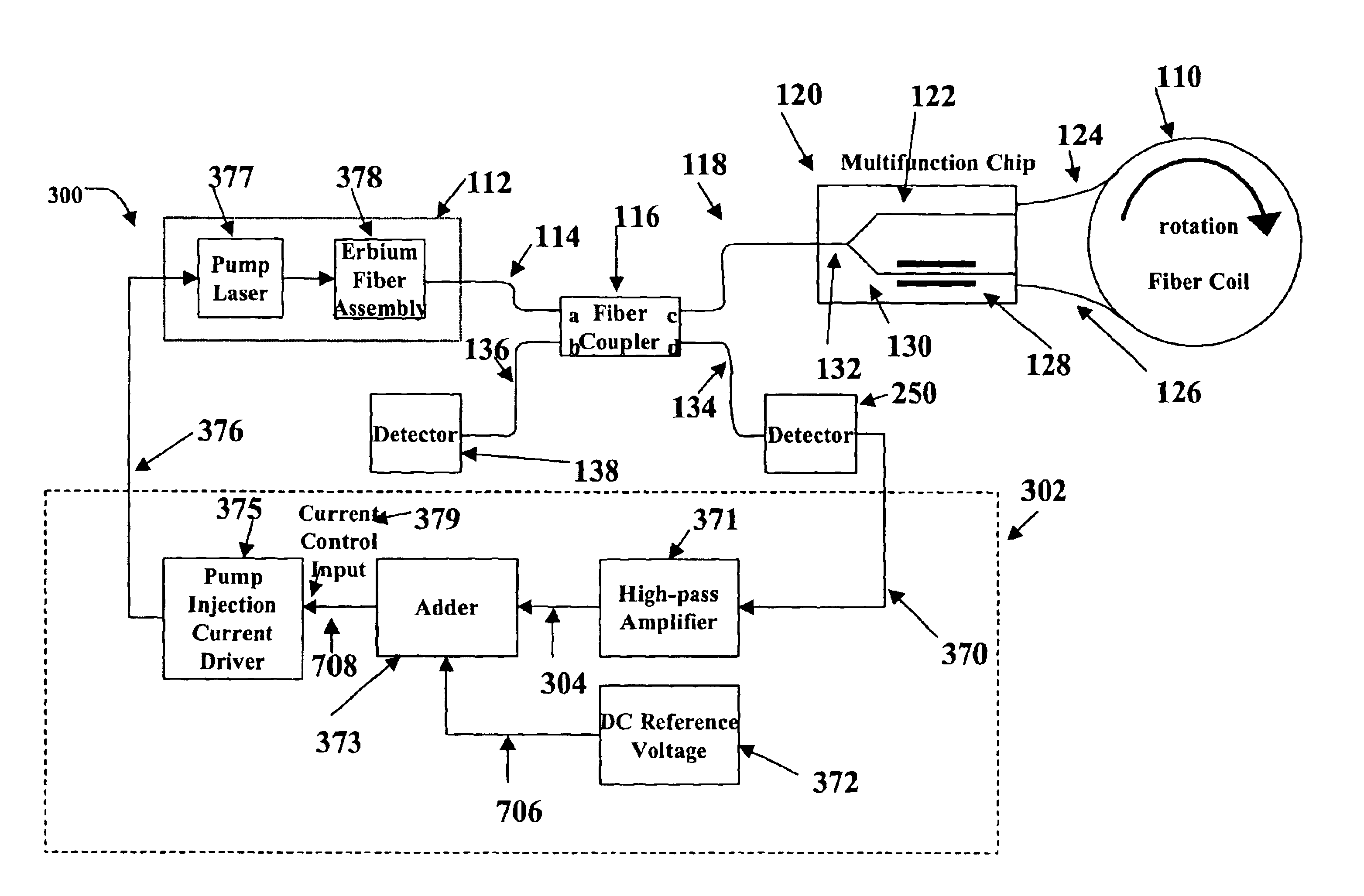Relative intensity noise controller with maximum gain at frequencies at or above the bias modulation frequency or with second order feedback for fiber light sources
a noise controller and relative intensity technology, applied in the field of fiber optic gyroscopes, can solve the problems of reducing and affecting the accuracy of gyroscopes
- Summary
- Abstract
- Description
- Claims
- Application Information
AI Technical Summary
Benefits of technology
Problems solved by technology
Method used
Image
Examples
Embodiment Construction
Various embodiments of methods and systems are provided for reducing relative intensity noise in a high performance fiber optic gyroscope, which addresses many of the shortcomings of the prior art. Particularly, various methods and systems are provided for reducing the excess noise present in a erbium-doped fiber optic gyroscope by manipulating the intensity of the light provided by an erbium-doped light source in response to the gain attributable to the gain characteristics of the erbium-doped fiber.
In accordance with various aspects of the system, the present invention provides a system for suppression of relative intensity noise in a fiber optic gyroscope in which the system takes advantage of the frequency response of an erbium fiber to control variations in pump current, and thus control fluctuations in the gyroscopic light source. Particularly, various embodiments use the erbium fiber frequency response to facilitate a stable control loop feed back design for controlling the p...
PUM
 Login to View More
Login to View More Abstract
Description
Claims
Application Information
 Login to View More
Login to View More - R&D
- Intellectual Property
- Life Sciences
- Materials
- Tech Scout
- Unparalleled Data Quality
- Higher Quality Content
- 60% Fewer Hallucinations
Browse by: Latest US Patents, China's latest patents, Technical Efficacy Thesaurus, Application Domain, Technology Topic, Popular Technical Reports.
© 2025 PatSnap. All rights reserved.Legal|Privacy policy|Modern Slavery Act Transparency Statement|Sitemap|About US| Contact US: help@patsnap.com



